Our second issue of 2021, celebrating our 200th anniversary, is a salute to the Post’s iconic, storytelling covers. The greatness of The Saturday Evening Post is rooted in how accurately it reflected American life. In the fiction and articles it printed, in its editorials, even in the advertisements that swelled its pages — but most tellingly in its covers — the Post provided Americans with a weekly mirror in which to see themselves.
Best remembered of those covers is the work of the magazine’s most famous artist, Norman Rockwell. But Rockwell was not alone; in the great period of American illustration, almost all the finest illustrators of the day contributed art for the Post’s cover. A list of these illustrators includes such names as J.C. Leyendecker, Stevan Dohanos, Frances Tipton Hunter, Richard Sargent, John Falter, and many, many more.
Post covers offered a variety of visions of American life. There were portraits — of beautiful women, comical children, rural oldsters, famous personages. There were topical covers, nature covers, covers to celebrate holidays, and covers to record the variety and vitality of the American scene. But best known are the narrative covers — scenes that in a single image tell an entire story.
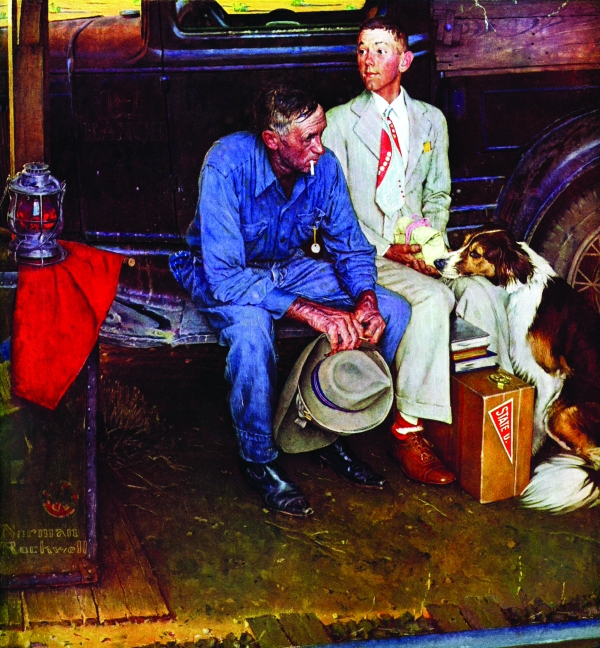
Norman Rockwell
September 25, 1954
© SEPS
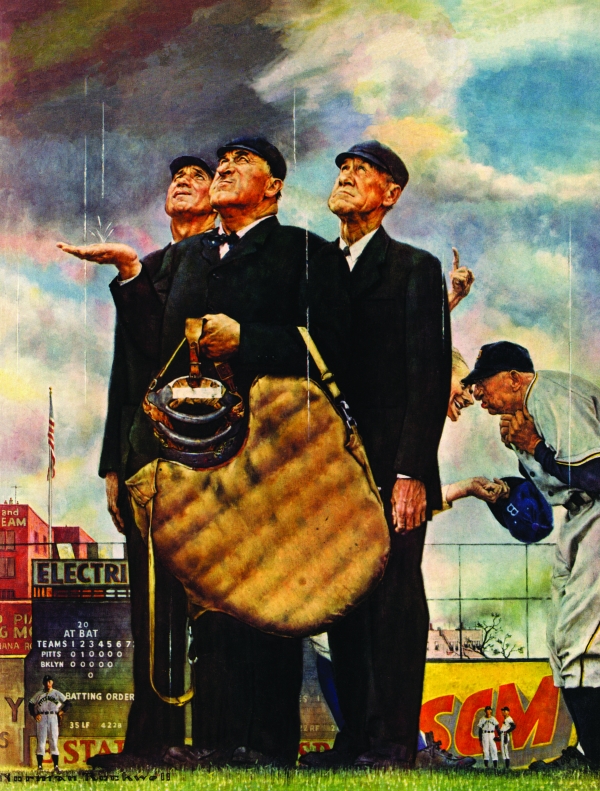
Norman Rockwell
April 23, 1949
© SEPS
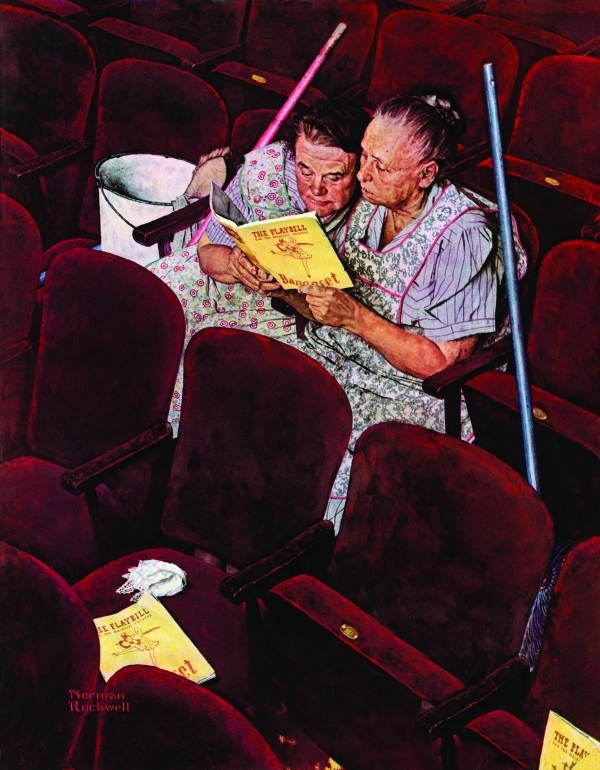
Norman Rockwell
April 6, 1946
© SEPS
Filmmakers George Lucas and Steven Spielberg, both fans and collectors of Rockwell’s work, consider his art cinematic for its ability to tell an entire story in a single image. “[Rockwell] captures the emotion and more importantly the fantasy, the ideal of that particular time in American history,” Lucas has said. “So you really get a sense of what America was thinking during those years and what their ideals were and what was in their hearts.”
Spielberg purchased the original painting of Boy on High Dive and keeps it in his office. “It means a lot to me because we’re all on diving boards hundreds of times during our lives, taking the plunge or pulling back from the abyss,” Spielberg told a reporter. “For me, that painting represents every motion picture just before I commit to directing it.”
“[Rockwell] captures the emotion and more importantly the fantasy, the ideal of that particular time in American history.”
—George Lucas
The Post and its covers have become such an important part of the history of American popular culture that it comes as something of a surprise to discover that the magazine once had no cover at all. When Cyrus Curtis bought the near-defunct Saturday Evening Post for $1,000 in August 1897, it was a tabloid in need of every kind of resuscitation. At first, it was adequate to clean up the typeface, improve the design, and tinker with the logo.
The concept of an illustrated Post cover developed gradually. It wasn’t until May 27, 1899, that an illustration appeared on page 1 alongside a poem.
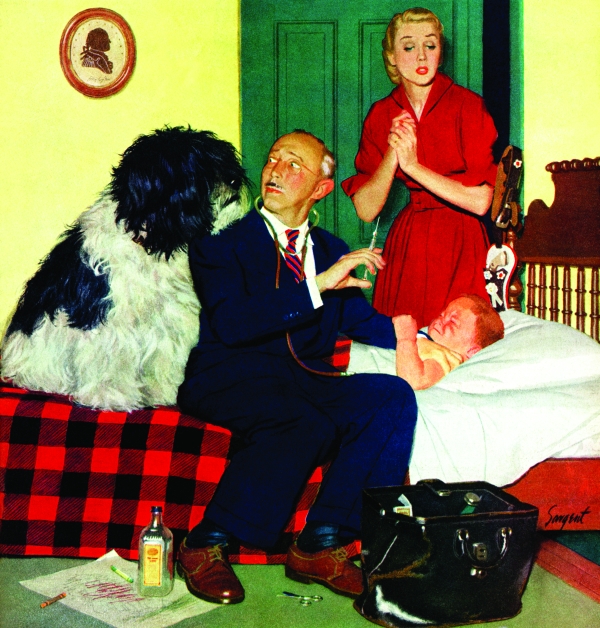
Richard Sargent
November 21, 1953
© SEPS
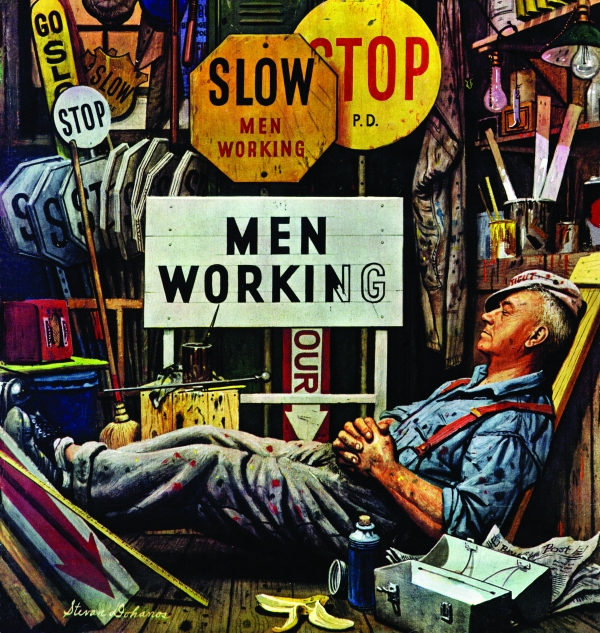
Stevan Dohanos
April 12, 1947
© SEPS
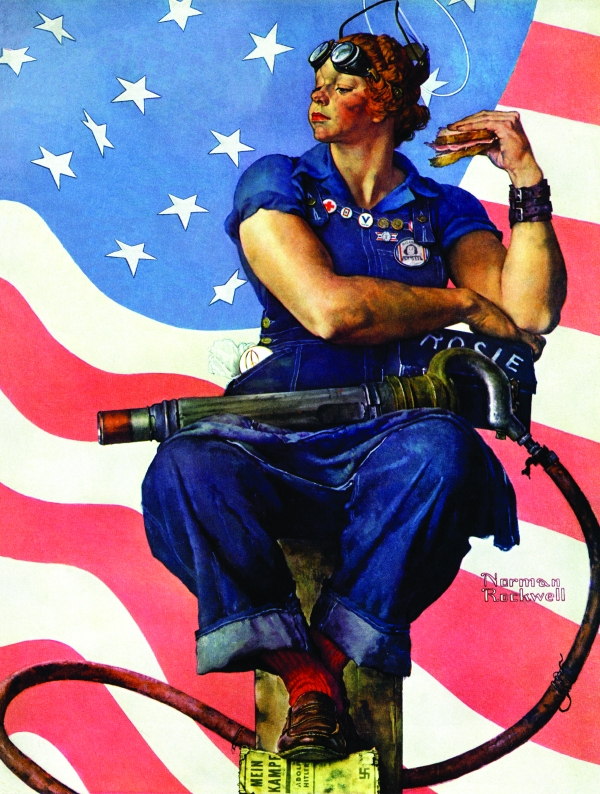
Norman Rockwell
May 29, 1943
© SEPS
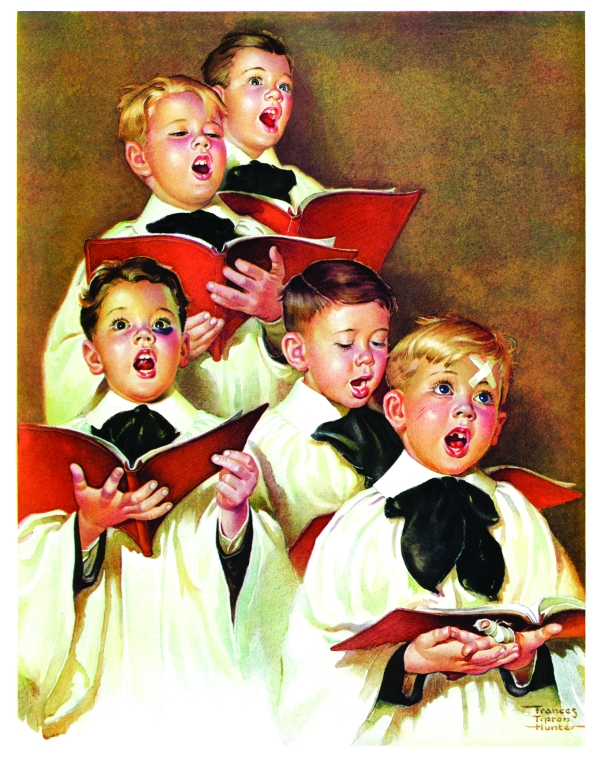
Frances Tipton Hunter
December 10, 1938
© SEPS
Two weeks later, Cyrus Curtis made his most important decision for The Saturday Evening Post. On June 10, 1899, he named George Horace Lorimer editor; Lorimer, one of America’s preeminent magazine editors, would hold this position through 1936. During the first summer, he worked to prove himself and his magazine, searching out important articles and fiction, soliciting advertising, and experimenting with the artwork and layout of page 1.
By the fall, he had hit upon a formula that worked. The September 30, 1899, issue, for the first time, had its own separate cover, in color. It was a seascape called For the Freedom of the Sea by George Gibbs, who would produce scores of the magazine’s early covers.
For the rest of the year, the magazine alternated between two-color covers with a full-page painting and those in black and white with both text and ornamentation. Soon Lorimer discarded the cover illustration designed to support an article or piece of fiction; in its place, the magazine presented images that were simply appealing in their own right. The principal function the covers would come to serve was the representation of America — or more precisely, of America’s ideas about itself. The art was aspirational, expressing images that stirred common feelings and appealed to shared ideals.
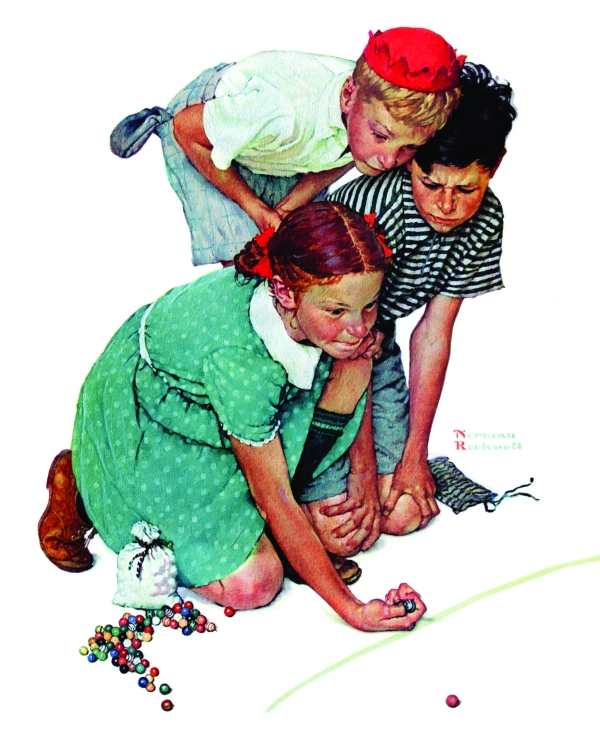
Norman Rockwell
September 2, 1939
© SEPS
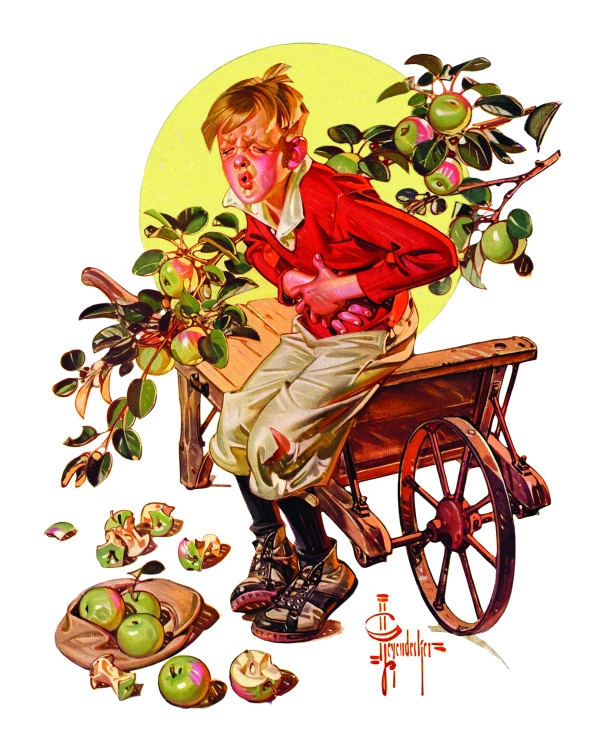
J.C. Leyendecker
September 16, 1933
© SEPS
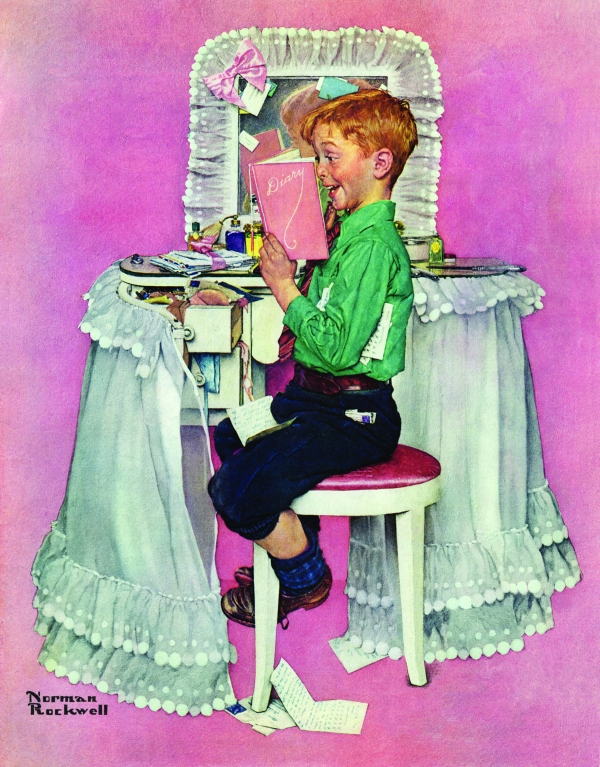
Norman Rockwell
March 21, 1942
© SEPS
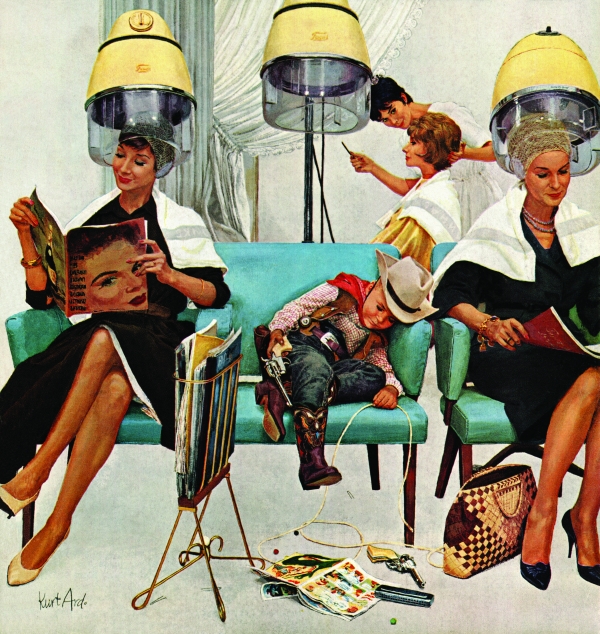
Kurt Ard
May 6, 1961
© SEPS
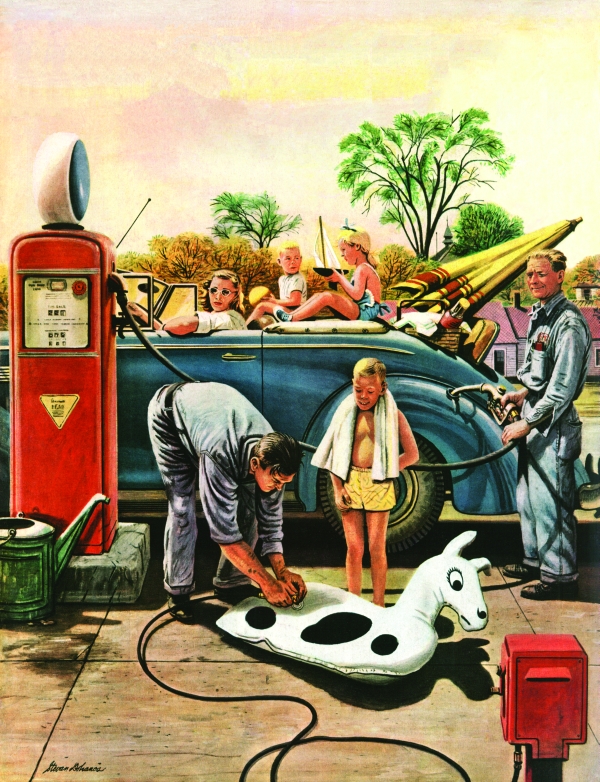
Stevan Dohanos
August 20, 1949
© SEPS
J.C. Leyendecker was the Post’s preeminent illustrator during the first decade of the 20th century. He would paint well over 300 Post covers, including his most memorable and eagerly anticipated holiday covers for Easter, Thanksgiving, Christmas, and New Year’s Day.
In the years before the First World War, a new approach to cover art made its appearance, an approach that would come to typify Post covers and, indeed, the Post itself.
That new approach might best be called narrative illustration, and its greatest practitioner was Norman Rockwell. Of course, when Norman Rockwell’s first cover appeared on the Post in 1916, it was a work that clearly imitated, and in many ways improved on, the comic narrative illustrations already so popular. In fact, that famous first cover, showing a miserable boy wheeling the family’s new baby in a carriage to the undisguised amusement of his friends, was simply Rockwell’s version of a cover painted by Charles A. MacLellan for the August 2, 1913, cover.
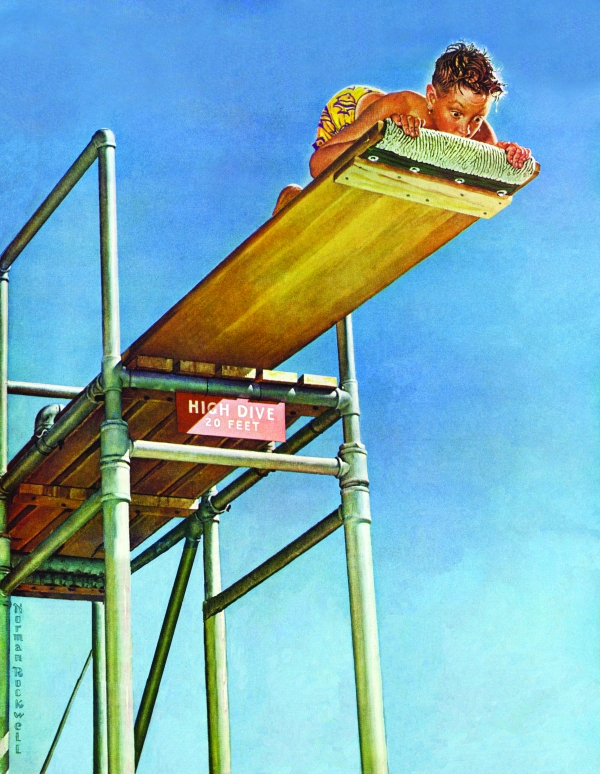
Norman Rockwell
August 16, 1947
© SEPS
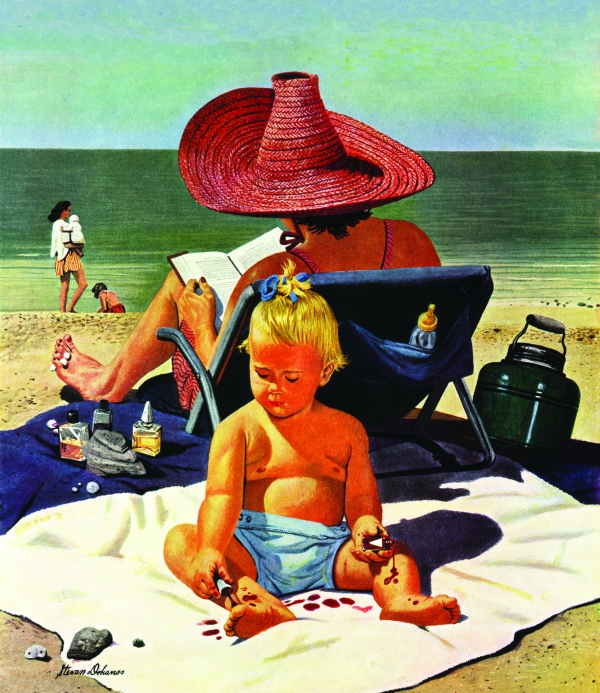
Stevan Dohanos
July 22, 1950
© SEPS
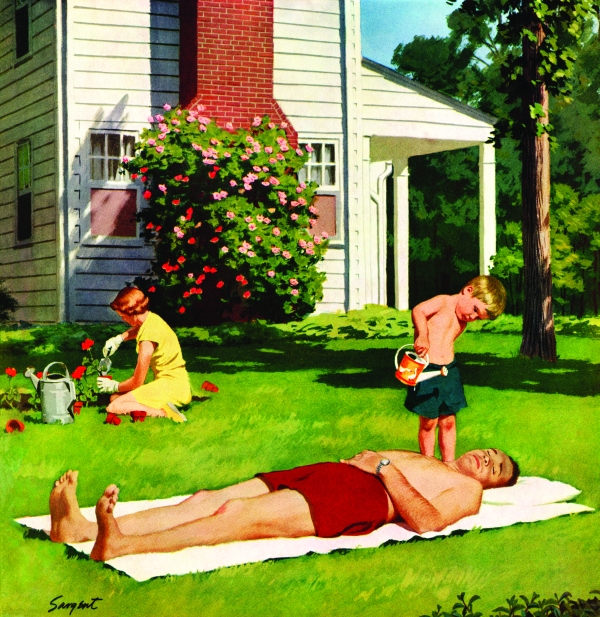
Richard Sargent
June 4, 1955
© SEPS
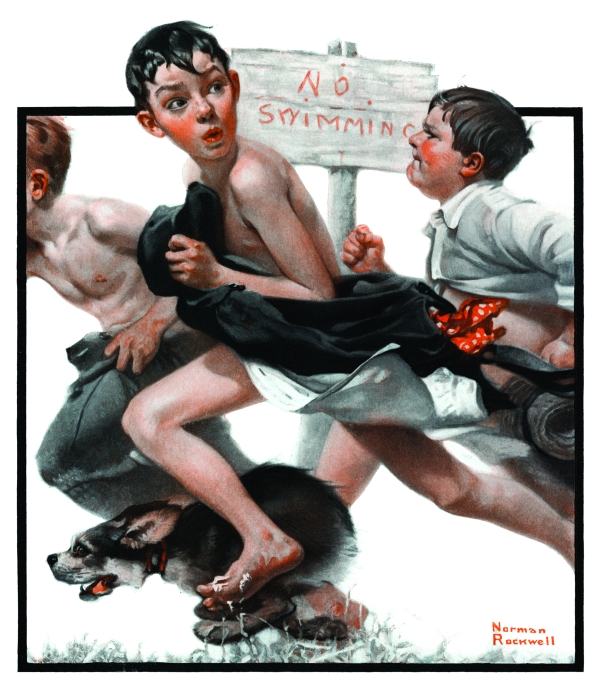
Norman Rockwell
June 4, 1921
© SEPS
Rockwell’s cover paintings are filled with details that enhance both the implied narrative and the mood. For example, Breaking Home Ties teeters on the edge of sentimentalism, but the rooting in detail saves it. A working man, no doubt a farmer, sits in his work clothes by his son. The son is dressed in a suit, and his fancy red-and-white tie and socks match the colors of the State U. banner on his suitcase. The father’s face is unreadable; the son’s is filled with expectation. The collie, resting his head on the boy’s leg, expresses the sadness restrained in the face of the father.
In the end, the covers of the Post became more than their subjects and more than the artists who rendered them. The Saturday Evening Post’s covers became what might be called the most visible token of the magazine.

Stevan Dohanos
January 14, 1956
© SEPS
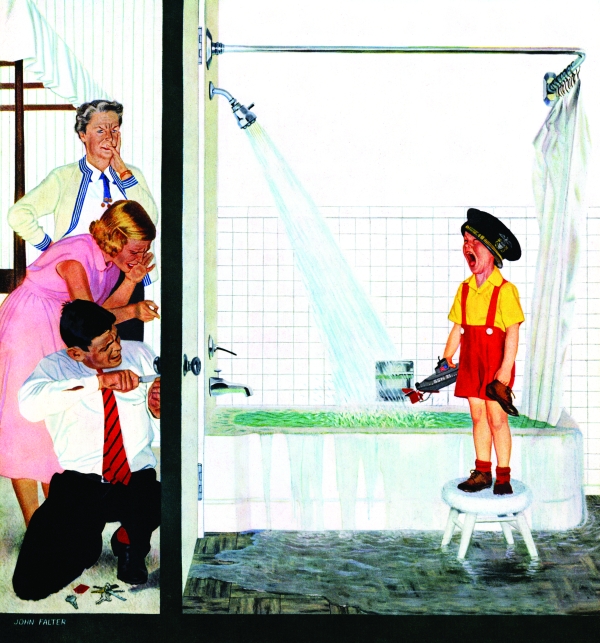
John Falter
December 3, 1955
© SEPS
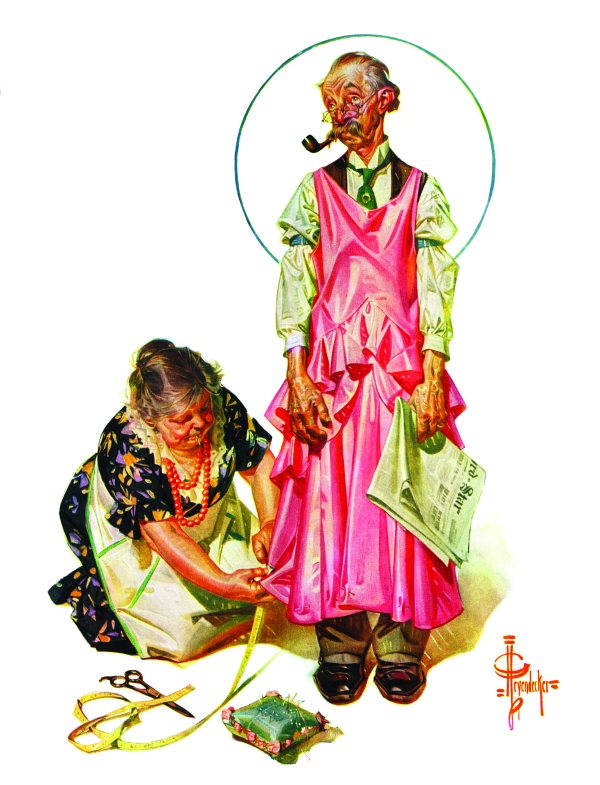
J.C. Leyendecker
March 5, 1932
© SEPS
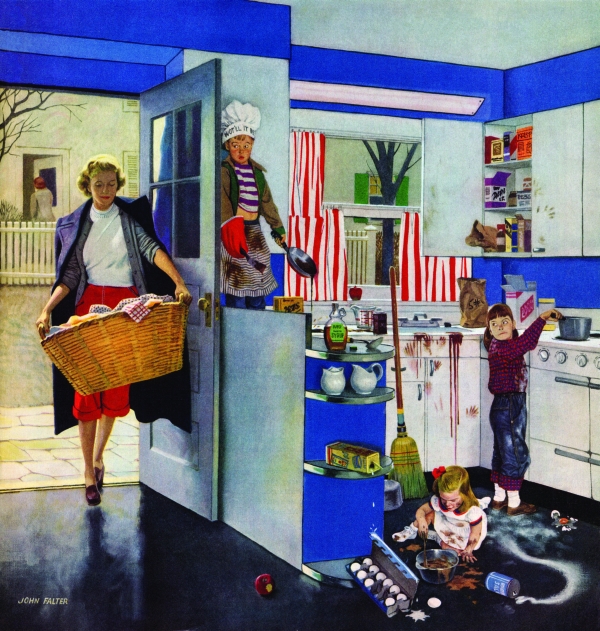
John Falter
April 18, 1953
© SEPS
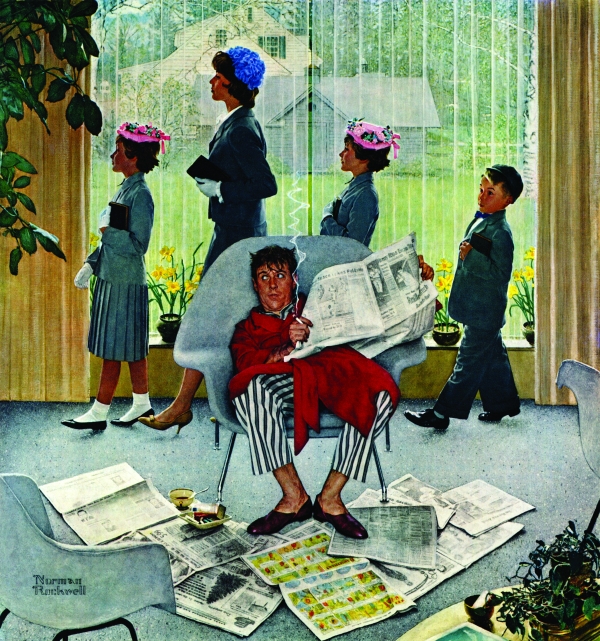
Norman Rockwell
May 16, 1959
© SEPS
Those are some of our favorites; what are yours? Browse our cover art archive and let us know which cover illustration tells a story that touches your heart.
Follow our continuing retrospective of the Post’s 200 years at saturdayeveningpost.com/200.
This article is featured in the March/April 2021 issue of The Saturday Evening Post. Subscribe to the magazine for more art, inspiring stories, fiction, humor, and features from our archives.
Featured image: Rosie the Riveter by Norman Rockwell, © SEPS
Become a Saturday Evening Post member and enjoy unlimited access. Subscribe now
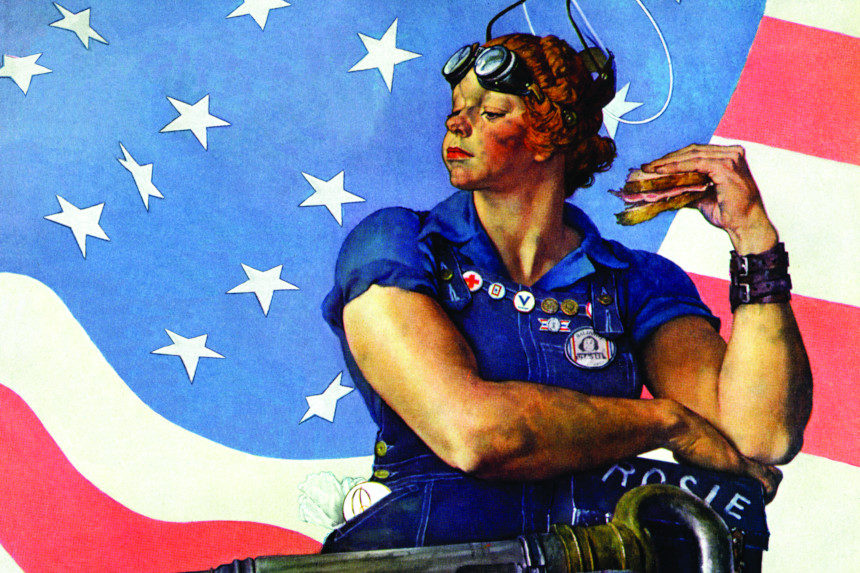



Comments
The colors are off on most of these . Why would you want to mess with the originals to make the colors over-saturated and gaudy ? The subtle tones of the original artwork did not need to have someone “tweak” it.
You aroused a couple of fond memories for me from the ’50’s.
I liked dressing up and playacting cowboys and Indians (Native Americans).
The little guy conked out between the women in the salon reminded me of my full cowboy outfit that I got for Christmas. I had a brand new cowboy hat, a single gun holster set, (two gun sets were too show-offish), I had brand new boots, and Mom dug out one of her scarves to put around my neck for a bandana. I’ve got a photo of me as a seven year old out in the yard in my regalia.
On another dress up event, I got into Mom’s finger nail polish to paint my face with ‘war paint’ to pretend to be ready to go on the war path. Mom was horrified and mad at me for using up most of one of her bottles of fire engine red paint, and then torturing me, by scrubbing off my face stripes, with cotton balls, soaked in polish remover. Later I realized that that stuff is acetone. Did my Mom abuse me? Ha ha,
The little girl painting her toes, feet, ankles behind her mother’s back while at the beach reminded me of my adventure. Good times.
I also survived riding around in cars with no seat belts while inhaling Mom and Dad’s tobacco smoke. Somehow, I made to adulthood.
I love Norman Rockwell. I have a copy “Country Gentlemen” published August 25, 1917. I have the whole magazine but a few pages have come loose from the binding but still in tact. I have it framed. My Dad as 21 year old and my Mom was 17 at the time. A cherished publication.
Norman Rockwell over the years has presented the best in humor and reality through his wonderful paintings which are a treasure. It is a comfort to be able to enjoyng tthese treasure during these challenging times.
Who would have thought in the bleak days of 1897 that the stars were already aligning for the Post to start its meteoric rise to being the top magazine of the 20th century at the perfect moment in 1899?! Cyrus Curtis did with his vision for the publication, what he wanted and whom to hire to make it a reality. Then the dominoes he laid out all fell into place, and have kept on going, to this very day!
The focus though here is on the narrative illustration, and the great selections where every picture tells a story in a singular image. I love them all, but have to say my 4th favorite here is ‘Mother’s Little Helpers’. Mom has just an inkling of what’s she’s just walked in on, and it’s not good. The 2 oldest already know it’s bad, trust me.
3rd would be ‘Inflating Beach Toy’. The standing station attendant’s face and the boy’s both say this is bad, and too much. The two kids on top of the convertible are poster children for ‘child endangerment’ before the term existed. Despite the cringe worthy aspects of it all, it’s still a beautiful Dohanos cover. (Does that make me a hypocrite?)
2nd favorite is Ms. Hunter’s “Choir Boys’. I think we know (from the top) that things were anything but ‘angelic’ between boys 3 and 5, not long before this church service!
1st is ‘Sunday Morning’. So much being said with the sound of silence. Rockwell made Dad look bad here from his facial expression, slumping himself in the chair, to even his hair. This man is likely a ‘Tired Dad’ that just wants some quiet alone time before starting another demanding work week. When other than on a Sunday morning is he likely to get that chance? So we need to be understanding; he already feels guilty enough. The smoking does have to go outside though.